The following is a list of the chiefs of the Clan Fraser of Lovat. The Chiefs of Clan Fraser often use the Gaelic patronym MacShimidh.
| No. | Name | Died | Details |
|---|---|---|---|
| I | Sir Simon de Fraser | 1306 | Known as the Patriot, he led the clan during the Wars of Scottish Independence, fought at the Battle of Dunbar in 1296 and was hanged, drawn and quartered. |
| II | Simon Fraser of Lovat | 1333 | Cousin of I. Led the clan at the Battle of Halidon Hill in which he was killed. All subsequent chiefs were known as MacShimidh 'son of Simon'. |
| III | Simon Fraser of Lovat | 1347 | Son of II. Fought at the Battle of Durham in which he was killed. |
| IV | Hugh Fraser of Lovat | 1397 | Son of III. |
| V | Alexander Fraser of Lovat | 1415 | Son of III. |
| VI | Hugh Fraser of Lovat | 1440 | Son of IV. Held the office of High Sheriff of Inverness-shire in 1431. |
| VII | Hugh Fraser of Lovat | 1450 | Son of VI. |
| VIII | Hugh Fraser, 1st Lord Lovat | 1501 | Son of VII. Made a Lord of Parliament in 1458 in Scottish Peerage. |
| IX | Thomas Fraser, 2nd Lord Lovat | 1524 | Son of VIII. Held the office of Justiciar of the Highlands. |
| X | Hugh Fraser, 3rd Lovat Lovat | 1544 | Son of IX. Killed fighting against the MacDonalds and Camerons at the Battle of the Shirts. |
| XI | Alexander Fraser, 4th Lord Lovat | 1557 | Son of X. In 1555 he waited on Mary of Guise when she came to Inverness to hold assizes |
| XII | Hugh Fraser, 5th Lord Lovat | 1576 | Son of XI. Known as Red Hugh, in 1562 he met Mary, Queen of Scots at Inverness and was made Captain of Inverness Castle. |
| XIII | Simon Fraser, 6th Lord Lovat | 1633 | Son of XII. Served at the Court of James I. |
| XIV | Hugh Fraser, 7th Lord Lovat | 1646 | Son of XIII. |
| XV | Hugh Fraser, 8th Lord Lovat | 1672 | Grandson of XIV. |
| XVI | Hugh Fraser, 9th Lord Lovat | 1696 | Son of XV. Married Lady Amelia Murray, daughter of the Duke of Atholl, who as a widow was later abducted by the Old Fox XVII Chief. |
| XVII | Thomas Fraser, 10th Lord Lovat | 1699 | Son of XIV. Supported the Royalists during the Wars of the Three Kingdoms. |
| XVIII | Simon Fraser, 11th Lord Lovat | 1747 | Son of XVII. Most famous chief in clan history, known as theFox, he was executed for treason in 1747 for his part in the 1745 Jacobite Rising. |
| XIX | Simon Fraser of Lovat | 1782 | Son of XVIII. General who served in the Seven Years' War and American Revolutionary War. |
| XX | Archibald Campbell Fraser of Lovat [lower-alpha 1] | 1815 | Son of XVIII. Served as British Consul at Tripoli and Algiers. |
| XXI | Thomas Fraser, 12th Lord Lovat | 1875 | Cousin of XX. Descended of the Frasers of Strichen, also created 1st Baron Lovat in the peerage of the United Kingdom. |
| XXII | Simon Fraser, 13th Lord Lovat | 1887 | Son of XXI. Served as Lt.-Col. of the Queen's Own Cameron Highlanders and was aide-de-camp to Queen Victoria. |
| XXIII | Simon Joseph Fraser, 14th Lord Lovat | 1933 | Son of XXII. Fought in the Second Boer War and World War I, and formed the Lovat Scouts. |
| XXIV | Simon Christopher Joseph Fraser, 15th Lord Lovat | 1995 | Son of XXII. Famously led the Commando 4 Brigade during Operation Overlord of World War II, accompanied by his piper. Churchill described him as the handsomest man to slit a throat, and Hitler had 100k marks on his head, dead or alive. |
| XXV | Simon Christopher Joseph Fraser, 16th Lord Lovat | Grandson of XXIV. Married Petra Palumbo in 2016. |
On May 1, 1984, by decree of the Court of the Lord Lyon, the 21st Lady Saltoun was made "Chief of the name and arms of the whole Clan Fraser". The Lord Lyon did not grant the Chiefship of the Clan Fraser, simply a description of "Chief of the name and arms." The Lord Lyon does not have power over the Chiefship of a Highland Clan. [1] Since this decree, there has been much confusion as to the Chiefship of the Clan Fraser.
When Simon the Pater's descendants first acquired the Lovat lands of the Ard, in the Highlands, they took to the Gaelic customs of the area. This included everything from language, ways of warfare, to clothing and fashion, even giving their children Gaelic names. By the time Simon's son came of age to lead the family, he was deemed to be the 1st Chief of Clan Fraser, the MacShimidh. [2]
Frasers who stayed in the Lowlands, however, maintained Teutonic (Germanic), or Norman culture. They took no part in Clan warfare, spoke Scots, and dressed like Lowlanders. According to Alexander Fraser, 18th Lord Saltoun, his family "continued to have their principal seat in the Lowlands, and those of the surname who remained in that section of Scotland, where Teutonic institutions prevailed, and whence the patriarchal system of Clans and Clanships had long been banished, had nothing to do with the origin or formation of the Highland Clan, and never belonged to it." [2]
According to the Lady Saltoun, his descendant, "The Frasers of Philorth, the Lords Saltoun, being the senior line, are Chiefs of the name of Fraser, although a lowland family. Lord Lovat is Chief of the very numerous Highland Clan Fraser of Lovat, based in Inverness-shire." [3]
The Lady Saltoun is not a descendant of the Shimidh, the Simon from whom the Clan Fraser traces its lineage, being descended from the Shimidh's older brother. So, though the Lord Lovat is still the Chieftain of Clan Fraser, the MacShimidh, the Lord Lyon has made official the seniority of the Lady Saltoun's line.[ citation needed ]
The selection of a clan chieftain is traditionally very different than the Teutonic/Norman system of inherited titles. A Clan would elect and follow whatever chief it chose. The Lyon Court decree has introduced a lack of clarity into the Clan's organisation. [2] Frasers differ on the matter, but most Lovats still regard the Lord Lovat as their chief, while many lowland Frasers, who adhere to the romanticised view of Clans and the Highlands, are happy to have found a way to link themselves to Highland culture. Opinions vary, but Frasers tend to respect each other as fellow Frasers, regardless of where they come from.[ citation needed ]
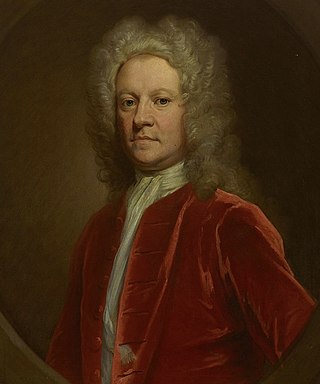
Simon Fraser, 11th Lord Lovat, nicknamed the Fox, was a Scottish Jacobite and Chief of Clan Fraser of Lovat, known for his feuding and changes of allegiance. In 1715, he had been a supporter of the House of Hanover, but in 1745 he changed sides and supported the Stuart claim on the crown of Great Britain. Lovat was among the Highlanders defeated at the Battle of Culloden and convicted of high treason against the Crown, following which he was sentenced to death and subsequently executed. He became the last man in Britain to be beheaded.

A Scottish clan is a kinship group among the Scottish people. Clans give a sense of shared heritage and descent to members, and in modern times have an official structure recognised by the Court of the Lord Lyon, which regulates Scottish heraldry and coats of arms. Most clans have their own tartan patterns, usually dating from the 19th century, which members may incorporate into kilts or other clothing.

Lord Lovat is a title of the rank Lord of Parliament in the Peerage of Scotland. It was created in 1458 for Hugh Fraser by summoning him to the Scottish Parliament as Lord Fraser of Lovat, although the holder is referred to simply as Lord Lovat. It was a separate title from the Scottish feudal lordship of Lovat, already held by the highland Frasers. In 1837 they were created a third title, Baron Lovat, of Lovat in the County of Inverness, in the Peerage of the United Kingdom. The holder is separately and independently the Chief of the highland Clan Fraser of Lovat.

Brigadier Simon Christopher Joseph Fraser, 15th Lord Lovat, was a prominent British Commando during the Second World War and the 24th Chief of the Clan Fraser of Lovat. Known familiarly as Shimi Lovat, an anglicised version of his name in Scottish Gaelic; his clan referred to him as MacShimidh, his Gaelic patronym. During Operation Overlord, he led the Special Service Brigade at Sword Beach and to successfully capture Pegasus Bridge, accompanied by his piper Bill Millin.
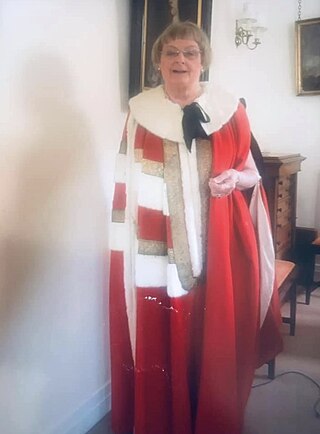
Marjorie Flora Fraser, 21st Lady Saltoun, is a Scottish peer. Until her retirement on 12 December 2014, she was the only holder of a lordship of Parliament who had a seat in the House of Lords as an elected hereditary peer. Lady Saltoun is the Chief of the Name and Arms of Clan Fraser since 1 May 1984, by decree of the Court of the Lord Lyon. She is also the head of the Scottish lowland family the Frasers of Philorth.

Clan MacNeacail, sometimes known as Clan MacNicol, is a Scottish clan long associated with the Isle of Skye. Tradition states that, early in its history, the clan held the Isle of Lewis, as well as extensive territory on the north-western mainland. The earliest member of the clan on record is one 14th century John "mak Nakyl", who is recorded amongst Edward I of England's powerful West Highland supporters during the Wars of Scottish Independence. John Barbour's 1375 epic, The Brus, suggests that by 1316, the clan had switched allegiance to Robert I, and made a decisive intervention in the new theatre of Anglo-Scottish conflict in Ireland. The marriage of an heiress to the MacLeods of Lewis brought a severe loss of lands and power in the following generation, forcing the clan chiefs to relocate to the surviving estates on Skye. However, the MacNeacails retained local significant influence: serving, according to tradition, as members of the Council of the Lords of the Isles and as custodians of the cathedral church of the Western Isles at Snizort. In the 17th century, members of the clan began to Anglicise their surname from the Scottish Gaelic MacNeacail to various forms, such as Nicolson. Today the English variants of the Gaelic surname are borne by members of the clan as well as members of unrelated Scottish families, including the Lowland Clan Nicolson.
A laird is the owner of a large, long-established Scottish estate. In the traditional Scottish order of precedence, a laird ranked below a baron and above a gentleman. This rank was held only by those lairds holding official recognition in a territorial designation by the Lord Lyon King of Arms. They are usually styled [name] [surname] of [lairdship]. However, since "laird" is a courtesy title, it has no formal status in law.

Clan Fraser is a Scottish clan of the Scottish Lowlands. It is not to be confused with the Clan Fraser of Lovat who are a separate Scottish clan of the Scottish Highlands. Both clans have their own separate chief, both of whom are officially recognized by the Standing Council of Scottish Chiefs.

Clan Fraser of Lovat is a Highland Scottish clan and the principal branch of Clan Fraser. The Frasers of Lovat are strongly associated with Inverness and the surrounding area since the Clan's founder gained lands there in the 13th century.

The Battle of the Shirts was a Scottish clan battle that took place in 1544 in the Great Glen, at the northern end of Loch Lochy. The Clan Macdonald of Clanranald and their allies the Clan Cameron fought the Clan Fraser and men from Clan Grant. The battlefield has been included and protected by Historic Scotland in their Inventory of Historic Battlefields in Scotland.
The Frasers of Philorth are a Scottish lowland family, originally from the Anjou region of France. Castle Fraser, their family seat, is in Sauchen, Aberdeenshire, Scotland. Since the time of Alexander Fraser, 11th Lord Saltoun, the heads of the Philorth family are the Lords Saltoun. The current head of the Frasers of Philorth is Flora Fraser, 21st Lady Saltoun, who is Chief of the Name and Arms of Clan Fraser since 1 May 1984, by decree of the Court of the Lord Lyon. The family's arms are "azure, three cinquefoils argent"—three silver strawberry flowers on a field of blue. The heraldic cinquefoil is a stylized five-point leaf; the cinquefoils which appear on the Fraser of Philorth coat-of-arms are specifically strawberry flowers. Only the Lady or Lord Saltoun is permitted to display these arms plain and undifferenced.

The Frasers of Strichen are a branch of the highland Clan Fraser of Lovat, which assumed the chiefship of the clan in the 19th century.
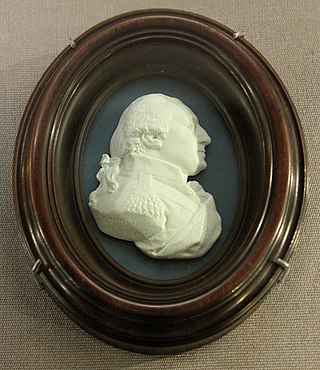
Archibald Campbell Fraserof Lovat, was British consul at Tripoli and Algiers, and later colonel of the 1st Inverness local militia. Upon the death of his brother, Simon Fraser (1726–1782), Archibald became the 20th MacShimidh (chief) of Clan Fraser of Lovat, and sat in the House of Commons from 1782 to 1784.

Clan Macdonald of Clanranald, also known as Clan Ranald, is a Highland Scottish clan and a branch of Clan Donald, one of the largest Scottish clans. The founder of the Macdonalds of Clanranald is Reginald, 4th great-grandson of Somerled. The Macdonalds of Clanranald descend from Reginald's elder son Allan and the MacDonells of Glengarry descend from his younger son Donald. The clan chief of the MacDonalds of Clanranald is traditionally designated as The Captain of Clanranald and today both the chief and clan are recognised by the Lord Lyon King of Arms, the heraldic judge in Scotland.

Clan MacDonald of Keppoch, also known as Clan MacDonellof Keppoch or Clan Ranald of Lochaber, is a Highland Scottish clan and a branch of Clan Donald. The progenitor of the clan is Alistair Carrach MacDonald, 4th great-grandson of the warrior Somerled. The clan chief is traditionally designated as the "Son of Ranald's son".
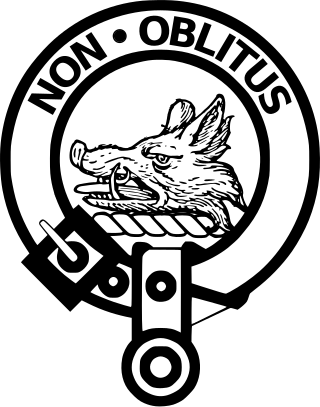
Clan MacTavish is an Ancient Highland Scottish clan.

Clan MacLennan, also known as Siol Ghillinnein, is a Highland Scottish clan which historically populated lands in the north-west of Scotland. The surname MacLennan in Scottish Gaelic is Mac Gille Fhinnein, meaning the son of the follower of St Finnan.

The Scottish Gaelic word clann means children. In early times, and possibly even today, Scottish clan members believed themselves to descend from a common ancestor, the founder of the clan, after whom the clan is named. The clan chief is the representative of this founder, and represents the clan. In the Scottish clan system, a chief is greater than a chieftain (ceann-cinnidh), a designation applied to heads of branches of a clan. Scottish clans that no longer have a clan chief are referred to as armigerous clans.
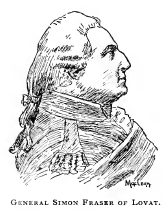
Simon Fraser of Lovat was a son of a notorious Jacobite clan chief, but he went on to serve with distinction in the British army. He also raised forces which served in the Seven Years' War against the French in Quebec, as well as the American War of Independence. Simon was the 19th Chief of the Clan Fraser of Lovat.
The Independent Highland Companies were irregular militia raised from the Scottish clans of the Scottish Highlands by order of the British government between 1603 and 1760 in order to help keep the peace and enforce the law in the Highlands and were recognized as such by the government. The officers of the Independent Highland Companies were commissioned as officers of the British Army but the Independent Companies were not recognized as official regiments of the line of the army. The Independent Highland Companies were the progenitors of the Highland Regiments of the British Army that began when ten Independent Highland Companies were embodied to form the Earl of Crawford's Highland Regiment that was numbered the 43rd Regiment of Foot in 1739.